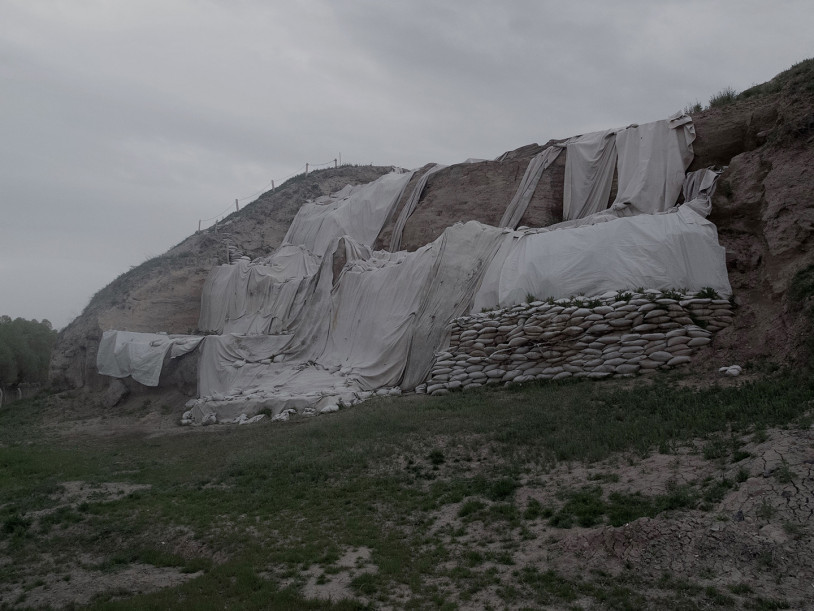
Aşıklı Höyük became famous as ‘the village where the first ever brain surgery was made’. Humanity had passed more than 2,5 million years as nomads under the harsh conditions of the ice age. After the softening of the climate circa 12000 B.C. (Holocene) some tribes started to experiment with settled life. The phases of this new formation which caused many firsts, changed religious thinking and even myths are displayed in this place one by one.
Aşıklı Höyük which is built on a river bank like all the other neolithic settlements (Melendiz River) took its share of the changes in the climate. The cold and dry climate which reigned around the volcano was turned into a humid and relatively warm one by the affects of the Holocene. During the period which saw the settlement process of Aşıklı Höyük - from mid 9th millenium to beginning of 8th millenium B.C.- the climate was rainy and hot. For this reason the settlement overlooking the Hasan Volcano rich with resources that were needed for the change.
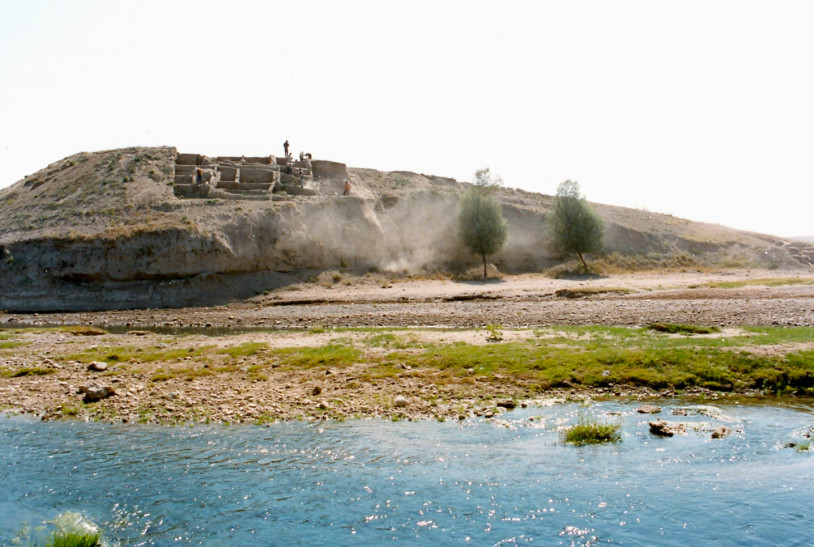
Aşıklı Höyük and river Melendiz, from W to E.
Like it is observed in other neolithic settlements built by hunter-gatherer societies, hunter-gatherer life style continues for a long time here as well. But the fact that the animals were stable, (not migrating) and that there was an abundance of various nutricious plants in the vicinity, eliminates the need for migration. The first settled people, fed themselves with a great variety of animals and plants supplied by the microclimate. (Sheep, goat, pig, vulture, crow, duck, fish, wild almond, fruits etc.) The society first controlled the sheep and the goats by feeding them in the areas next to their houses, then herded and domesticated them. Even though some plant species were domesticated, the agricultural revolution hadn’t happened yet. So wild plant gathering kept its importance throughout the settlement period.
Twelve per cent of the settlement has been dug since the beginning of the archeological study in the area in 1989 but new findings are reached almost every day. The head of the excavations Prof. Dr. Mihriban Özbaşaran empahsises the importance of this transition:
“Neolithic residency, shows itself, besides a new social organization, with some innovations like the domestication of plants and animals. This radical change and the transition to a new life style seen in the lives of the people who lived for millions of years in nomadic, small groups based on needs of food and protection, happened in different times, different places and different ways in the world.
Aşıklı Höyük, which is studied since 1989, is a key to understanding this process with its well preserved architecture that is only dated to this period (It doesn’t have any later period settlements on top) and which kept on being settled for nearly 1000 years.”1
(1)(Instıtutum Turcıcum Scıentıae Antıquıtatıs; Colloquıum Anatolıcum; ISSN 1303-8486; Aşıklı in the Neolithisation Process of Central Anatolia; Aşıklı Höyük Excavation Head Prof. Dr. Mihriban Özbaşaran; page: 1-14 )
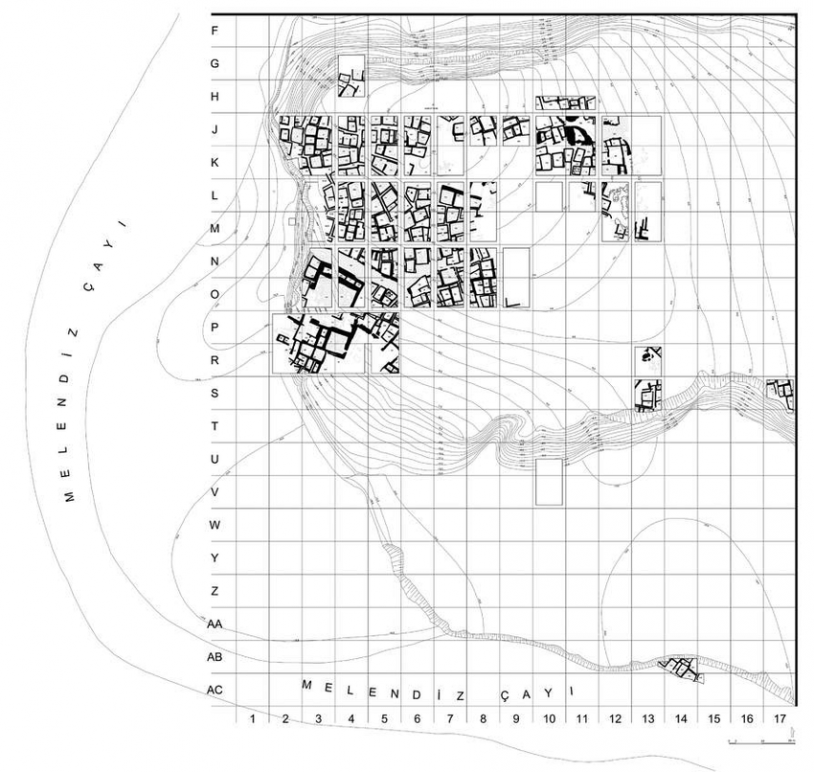
The topographical plan of Aşıklı Höyük showing the excavated area (re-draw by G. Duru - each grid measures 10x10 m).
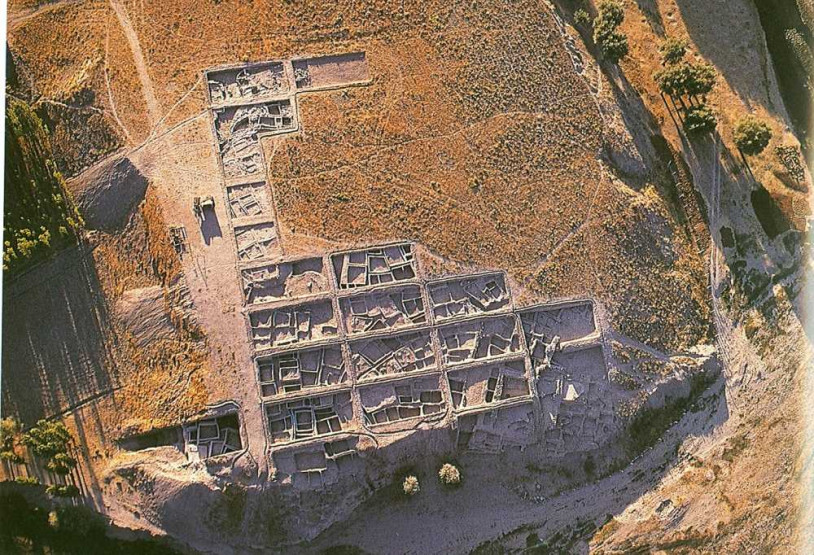
The ancient Neolithic settlement has many important discoveries, like the first brain trepanation, human autopsies, copper mining, astounding craftsmanship, and human transitions from nomadic to settled lifestyles. They began producing their own goods with techniques that we still don’t fully understand today. Animal domestication, manufacturing and construction developed due to interaction with other populations. Homes were constructed from mud bricks built in rectangles.
This exceptional settlement which displays the phases of transition from nomadic life to settled life like a fan, contains many of the firsts of the history of architecture. This adventure of development which kept on for 1000 years uninterrupted, reveals all the details of the transformation affiliated with social organization. When this small society which had magical thinking and formerly used caves and cave like shelters for protection decided to stop their millions years of nomadic life and settle down, it is seen that the first houses they built were cylinders buried in the ground, resembling the mother’s womb. This neolithic society that lived the whole life in a cosmic integrity, passed from structures buried in the ground to doorless, above ground structures. Intramural burials can be found under the bases of the structures. While in the earlier graves, individuals are buried, in the later period graves people with children or couples were found buried together. This makes us think that the phenomenon of core family, started and developed slowly during this period.
As we move towards 8000 B.C. we start to see angular houses which resemble modern day houses. These, angular, doorless, rectangular houses are products of technical knowledge gained through experience. Passing from shelter to house is followed by public buildings. The public building called the “T building” stands out with its interesting characteristics. It is thought that it was used for rituals that kept the society together. It had communal ovens and tandooris (cooking pits). Animals with lots of meat such as wild ox were consumed here intensely. The floor of the base was renewed 300 times and it had a lime-coated base, painted in yellow, something none of the other houses had. One wall was again lime-coated and painted in red. It also had a monumental hearth and a chanelled altar for offerings. These findings point to specialization and the existence of a clergy who organised these rituals.
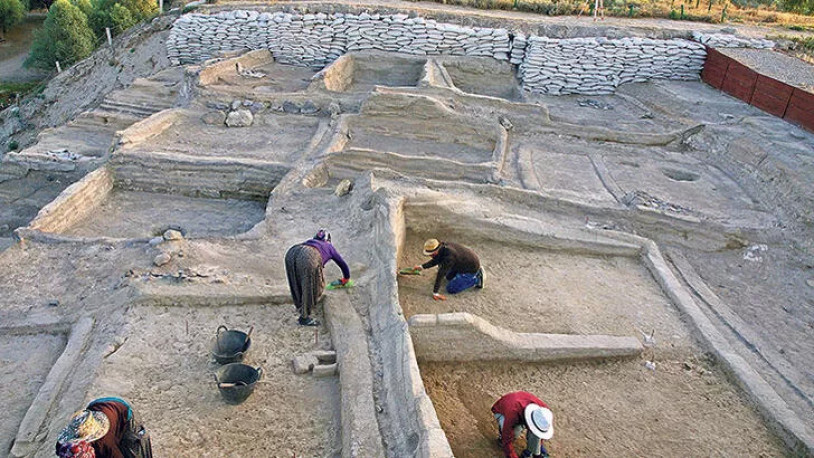
Aşıklı Höyük is a settlement with a history dating back to 10,400 years ago, where firsts were experienced. As archaeologists pursue new questions in this oldest village in Central Anatolia, the historical heritage of Aşıklı Höyük combined with the power of art in the “Excavation Traces” exhibition.
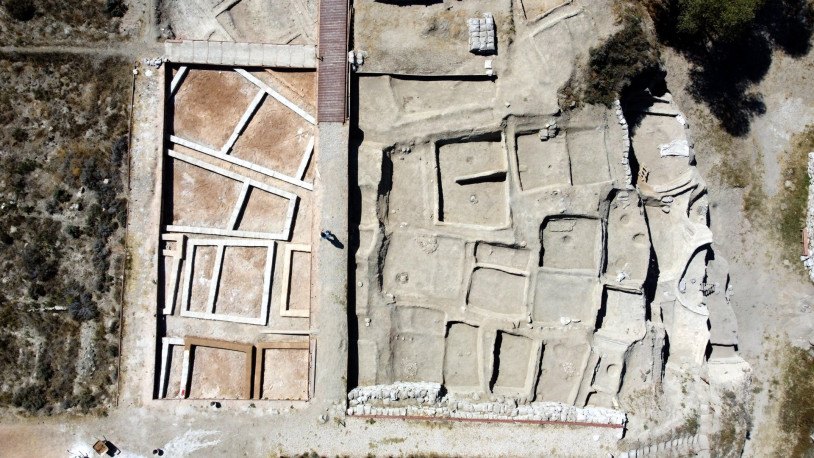
An aerial view from Aşıklı Höyük, Aksaray, central Turkey, August 25, 2021.
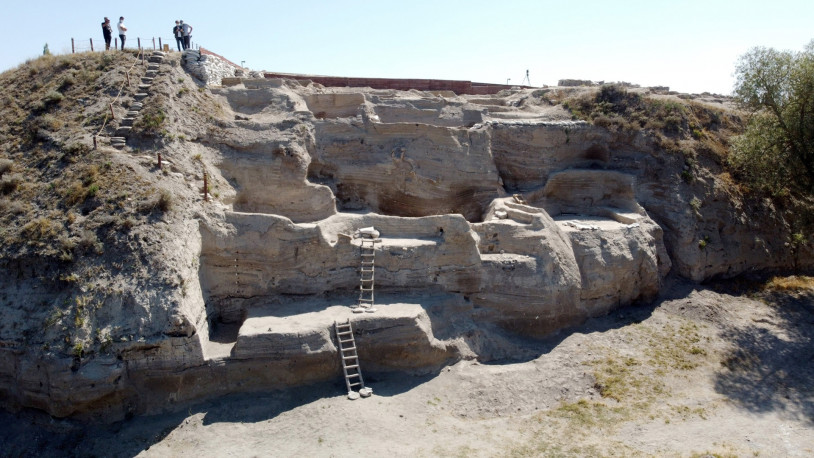
A general view from Aşıklı Höyük, Aksaray, central Turkey, August 25, 2021.
The neolithic society had a very different way of perceiving life than modern people. It made sense of the universe and existence by relating them to the sacred which exists beyond what is visible. For this reason the burial places found inside the homes were not graves to them. This deep spritiual connection created by a sacrification that we can not yet fathom, is thought to have created a transandental feeling of care for the dead individual:
“If there weren’t the beliefs that death is a passage to a non physical dimension or non physical existence continues after death, we can say that the habits of burial would also not exist. While in the belief of some societies the deceased, by going to the world of the dead only leaves behind a grave and the remains in it, some other societies believed that the dead kept on their existence as members of the society.”2
This society who wanted to intervene life with rituals, opened a small hole in the skull of a woman, who is thought to be an important person in the society, probably with an obsidian tool. (It is known that people who lived in Aşıklı used obsidian abundantly to make tools and weapons and they sold this resource to peoples who didnt have it, thus starting a sort of trade based on barter. The most important proof of this is the fact that contemporary setllements in Cyprus, Palestine, Syria and Iraq used these obsidian tools.) The analysis made on the skull showed that there were tissue regeneration of 7 to 10 days around the hole. This information shows us that the operation was not made with the intention of killing but healing. Etnographical examples make us think that the practise was carried out to exorcise an evil spirit that possessed the person. Obsidian, a hygienic material is being reintroduced to brain surgeries in modern day hospitals.
(2)(Sevil Özterzi, T.C.Ankara Unıversıtysocıal Scıences Instıtuteantropology (Paleoantropology), MA Thesis, Ankara-2011). T.C. Ankara Unıversıty Socıal Scıences Instıtute Anthropology (Paleoanthropology) Department Socıocio-Cultural An Evaluatıon Of Grave Types And Burıal Customs In The Neolıthıc And Chalcolıthıc Perıods In Anatolıa Master's Thesis SEVİL ÖZTERZİ Ankara-2011. ÖZBEK, M. (1993), "Aşıklı Höyük Neolithic Age People", VIII. Archaeometry Results Meeting, (pp. 201-213).

A burial site in Aşıklı Höyük, Aksaray, central Turkey, August 25, 2021.
The graves are similar and show no hierarchy of status. Located near an obsidian (volcanic glass) source it became a base of trade. Some 6,000 obsidian objects were retrieved from the surface layer of the site. Obsidian is a very hard volcanic glass that is challenging to work with. The oldest obsidian bracelet was found at the site made with remarkable workmanship.
The people of Aşıklı who put their mark on amazing firsts in history, not only whisper us tales of the time of great changes that they stand on the threshold of, but they also give us insights into related experiences before and after their times. The people who abondoned their way of life which they had kept for thousands of years and started to form a new way of life that they never experienced before managed to keep this new life for 1000 years. This new life maintained by a well organized system internally and not much affected by external inputs ended after 1000 years and Aşıklı was abondoned by a reason so far not known.
The findings until now show that Aşıklı Höyük is a unique and an examplary settlement not only for anatolia but for all near Asian cultures.
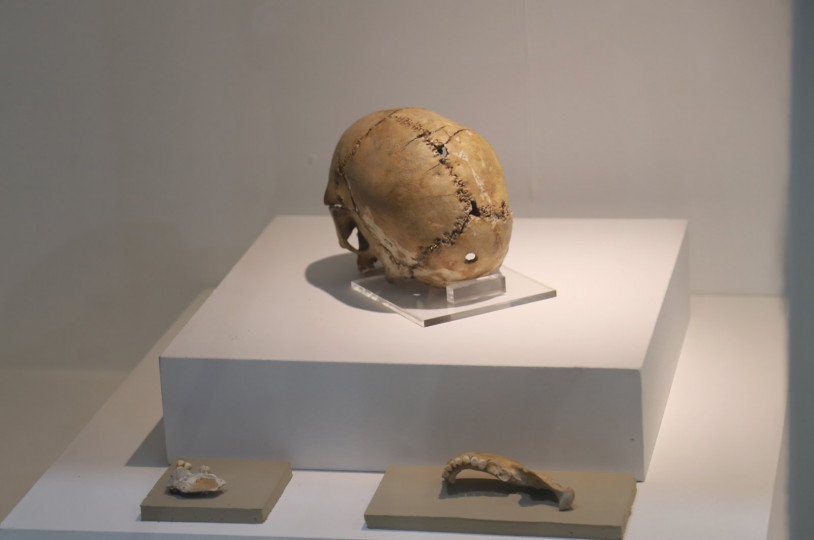
The skull featuring the traces of brain surgery on display at Aksaray Museum, central Turkey, August 25, 2021. 11 thousand years ago, the first brain surgery was done in Aşikli Höyük”. Culture and Tourism Director Mustafa Doğan stated that important developments were made in the field of medicine in Aşıklı Höyük as well, adding, "There is an indication that a brain surgery was performed in the region due to the intervention on the skull. This skull is exhibited in our Aksaray Museum today. From this perspective, Aşıklı Höyük can be considered as one of the pioneering settlements in the formation of a civilized society in the region," he said. Aksaray Museum Director Yusuf Altın said, "The skull, where the first brain surgery was performed, was found during the excavation work in 1991. This skull is dated to approximately 10 thousand years ago. It belongs to a woman aged 25-30. This surgery was performed with the belief that the evil spirits in her body would come out of the junction point at the back of the woman's skull with the obsidian and bone fragments of that period. It is observed that the patient lives for 10 more days after the operation. Why is this? In our research and anthro blocks, it was determined that she lived for about 10 more days, since a new tissue was formed in the inner part of the skull. This has entered the literature as the first brain surgery,”.











































